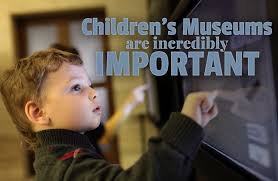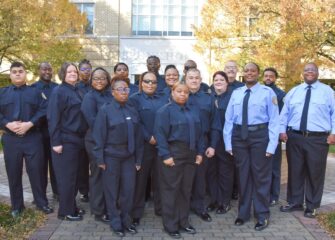
Physician and educator Marie Montessori referred to playing as a child’s work. Play strengthens the part of the brain acting as problem solver, creator, social-emotional behavior moderator, and plan-maker. This ideology abounds in Montessori schools and the three hundred children’s museums around the world. A National Center for Educational Statistics Early Childhood longitudinal study reports children who visited a children’s museum during kindergarten had higher achievement scores in reading, mathematics, and science in third grade, stayed in school longer, and enrolled in higher level classes. Children become more open-minded, free-thinking, and creative.
Ten indicators attract young professionals and families to a specific area – property values, commercial development, demographics, quality of schools, safety, investment, infrastructure, transportation, walkability, and the community’s culture including children’s museums. These facilities bring great economic value to a region through job creation, tourism, and improved quality of life. They have a return of more than $5 in tax revenue for every $1 they receive in funding from all levels of government, resulting in over 726,000 American jobs and contributing $50 billion in the U.S. economy. More than one-third of children’s museums have been part of a downtown re-vitalization project. Children’s museums strengthen community resources that educate and care for children, including after school programs and summer camps. Parents complain of children tethered to screens will delight in this child-friendly environment.
Children’s museums are not the traditional play space or a video arcade. A walk into a children’s museum might find young people exploring natural history and geology while conversing with archeologists, learning about children who changed the world, e.g. Anne Frank, Ruby Bridges, math games, story centers, art studios, maker spaces, and interactive displays of dinosaurs, athletes, or historians. Families connect in meaningful ways, attendees are sorry to see the session end, and the exhausted little people will want to know when they are returning. In short, Children’s museums create bridges of understanding through diversity, tolerance, inclusion, and experiential sharing.
Since 2017, an all-volunteer board has endeavored to bring the Minds in Motion children’s museum to Salisbury. Wicomico County is the largest school district on the Eastern shore with 15,000 students and at least a third of that group would benefit from a children’s museum. The Association of Children’s Museums estimates that, on average, it takes seven to ten years to open a new facility. For the past eight years, the Minds in Motion board and our student ambassadors have been offering STEM (Science, technology, engineering and math) pop-up activities at Third Fridays, STEM functions, CROWN sports, Peace in the Park, Earth Day, Salisbury Folk Festival, Pocomoke Children’s Museum, and Children’s Mental Health Awareness Family Night. Our annual New Year’s Day 5K Hot Chocolate Run attracted three hundred runners in 2025 and funds raised support STEM based activities to area children. In December 2024 we added a Polar Express night, and we hope to make this an annual event.
We are currently entering an exciting phase of our journey, and we are looking for board-member candidates and volunteers with experience in marketing and capital campaigns to help us with the next step. Anyone interested or if you know of someone who might be, please contact Melanie Kerber, MiM board secretary at 412-651-2236 of at drmelanieakerber@gmail.com. This is every resident’s opportunity to invest in our community and ensure that tomorrow’s leaders are prepared for the exciting discoveries that lie ahead.



